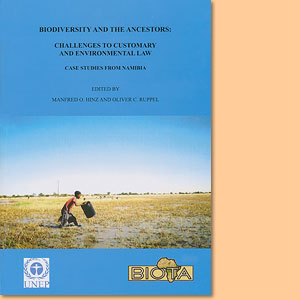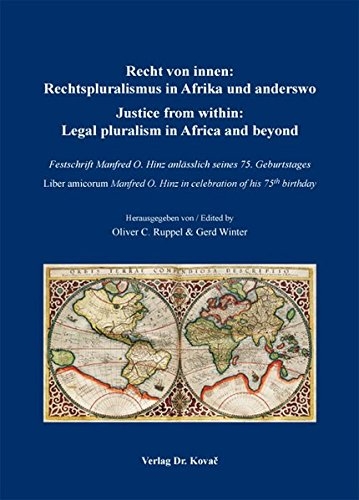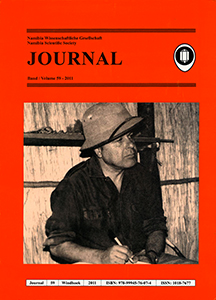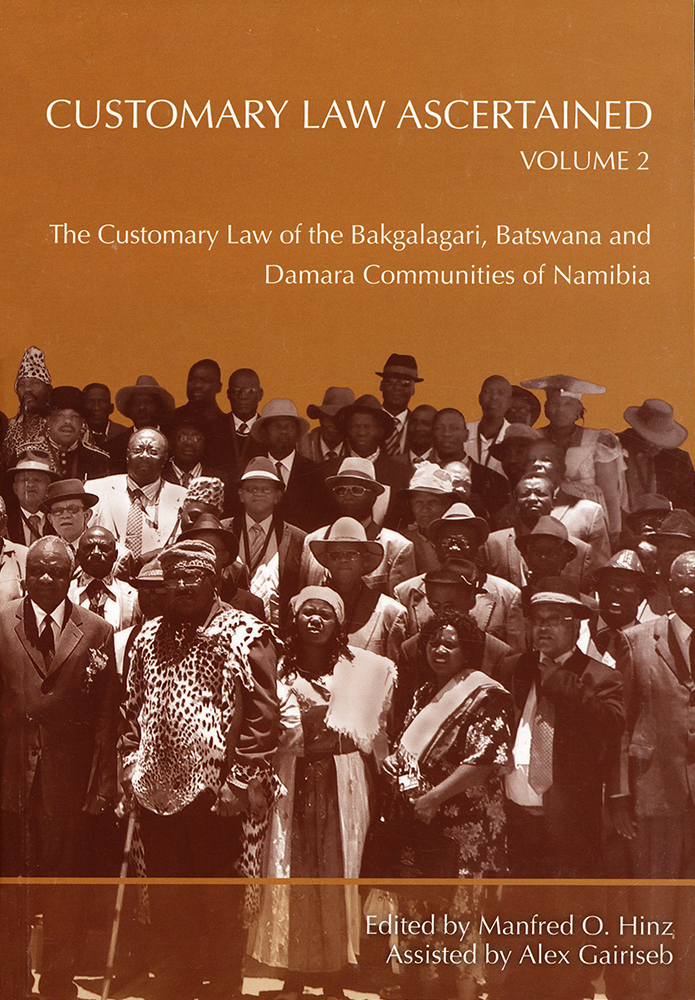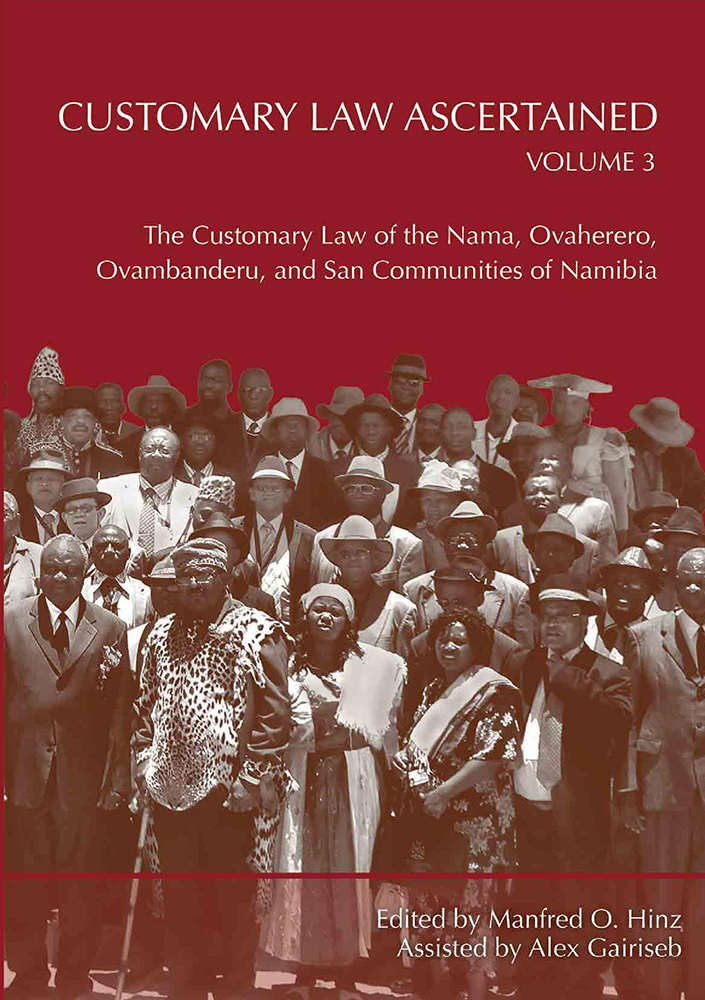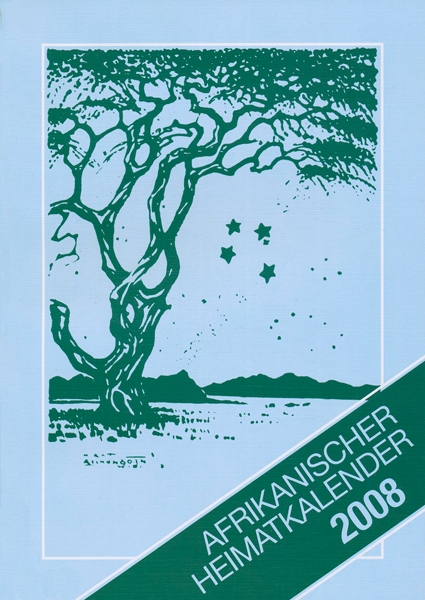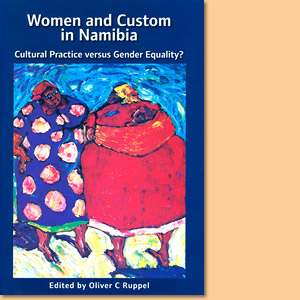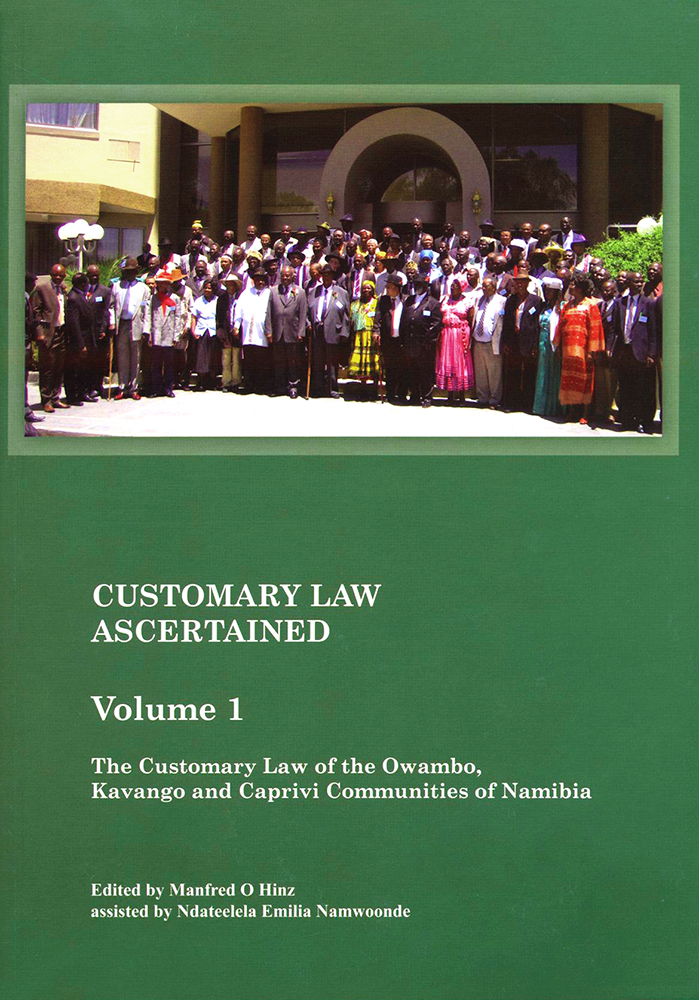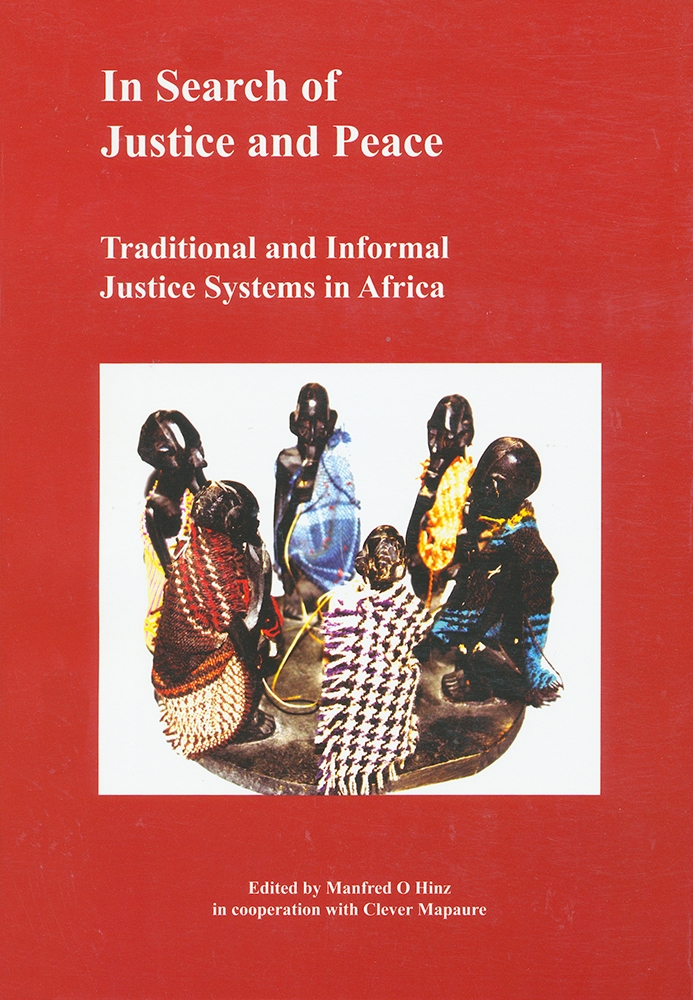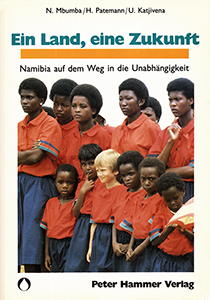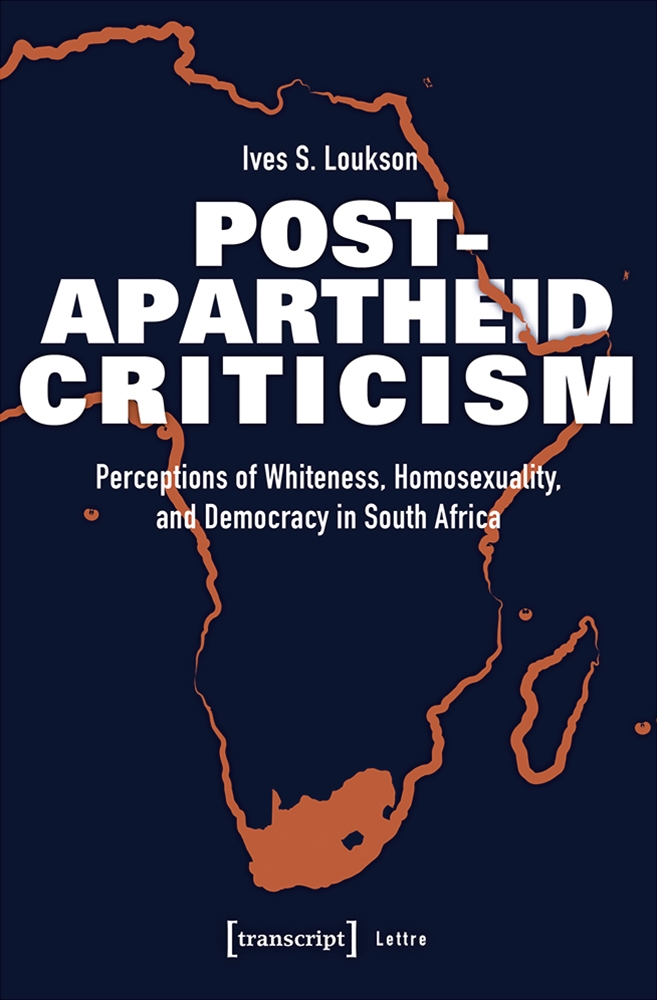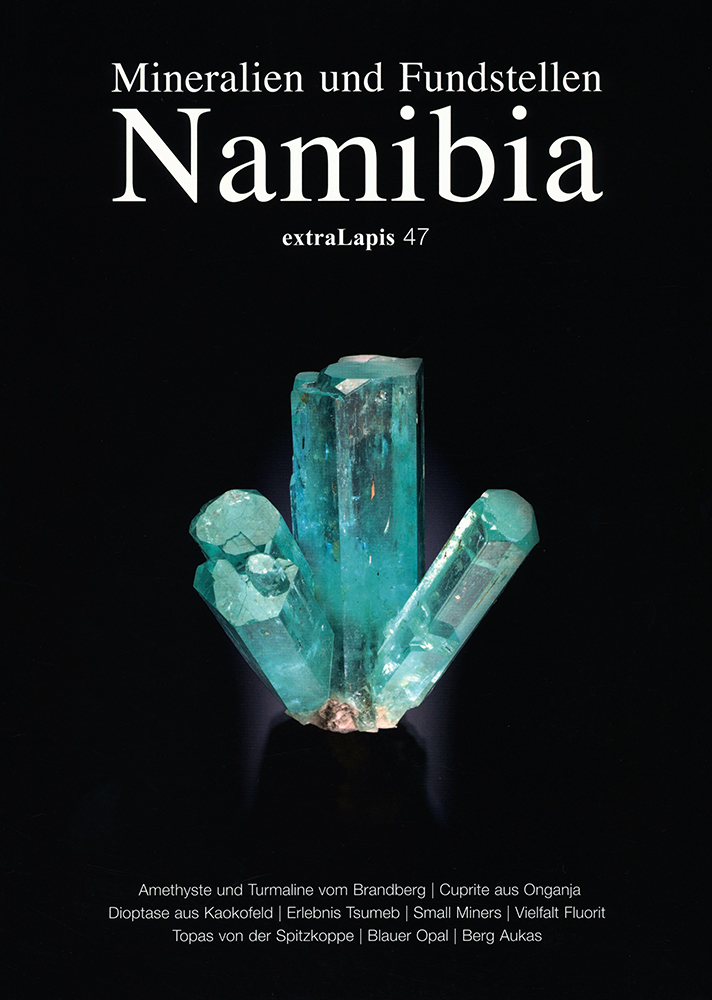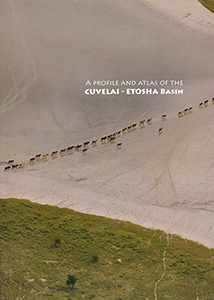Biodiversity and the Ancestors. Challenges to Customary and environmental law case studies from Namibia, by Manfred O. Hinz and Oliver C. Ruppel
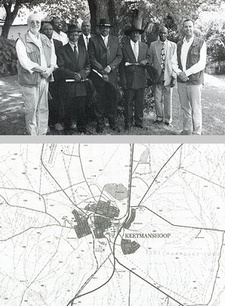
Biodiversity and the Ancestors. Challenges to Customary and environmental law case studies from Namibia, by Manfred O. Hinz and Oliver C. Ruppel.
The study of Manfred O. Hinz and Oliver C. Ruppel, Biodiversity and the Ancestors, explains the challenges to customary and environmental law case studies from Namibia. Hon. Netumbo Nandi-Ndaitwah, Minister of Environment and Tourism of Namibia, introduces the study:
It is a pleasure for me to preface this timely exposition of case studies on customary law, biodiversity and the protection of the environment in Namibia. It is estimated that approximately 27,000 species of animal and plant life disappear from our planet every year. The issue of biodiversity conservation deserves serious attention because the irrevocable loss of species threatens the very basis of human life. Biological diversity provides the foundation for human basic needs such as food, water and other natural resources. A multitude of drugs and a wide range of industrial materials are derived directly from biological resources. Since Namibia signed the Convention on Biological Diversity in 1992, the preservation of biological diversity has become a focus of environmental policy and legislative considerations. However, biodiversity conservation in Namibia has its roots not merely in the legal provisions issued in the last decades, but rather in the centuries¬ old customs of the people. This book shows, in an impressive manner, that an arc can be spanned between legislative efforts on global, regional, national and local levels and traditional methods of maintaining the environment and biodiversity.
This publication describes the legal foundations of biodiversity conservation in Namibia and serves as a useful guide to the broad range of provisions directly and indirectly relating to the protection of biological diversity. On the global, regional and sub-regional level, relevant conventions are described. On the national level, the Constitution of the Republic of Namibia as the supreme law of the country, as well as national policies and enactments and customary laws applied by the traditional communities of Namibia are analysed in terms of biodiversity conservation.
The case studies assembled here provide a unique insight into the practises and customs of people living in traditional settings. The publication will, therefore, be a valuable source of information and guidance for lawyers, anthropologists, students, policymakers and all those members of the public interested in environmental concerns, biodiversity conservation and customary law in Namibia. I wish to thank all who have contributed to the book and assisted in making it a reality. I highly recommend this book to be used in our schools and tertiary institutions.
Table of contents of Biodiversity and the Ancestors. Challenges to Customary and environmental law case studies from Namibia:
Preface
The contributors
Editors' note
Acknowledgements
List of abbreviations
Note on the use of words in African languages
List of photographs
Map of Namibia
PART I: LEGAL PROTECTION OF BIODIVERSITY IN NAMIBIA
Legal protection of biodiversity in Namibia
Manfred O Hinz and Oliver C Ruppel
1 Biodiversity in perspective
2 The global level
3 The African and regional level
4 The national level (I): Constitutional foundations and policies
5 The national level (II): Statutory enactments and bills in preparation
6 The protection of biodiversity under customary law
7 The BIOTA framework, research design and assumptions
PART II: LAND
Land allocation and the protection of biodiversity: A case study of Mbunza
Tulimeke M W Koita
1 Introduction
2 The protection of land under Mbunza customary law
3 Conclusion
Disputed land: Owambo cattle farmers in Ukwangali
Julia Mushimba
1 Introduction
2 Background
3 Socio-cultural factors behind the conflict
4 Eviction orders
5 Conclusion
PART III: GRASS
Grass as a natural resource: A case study of Uukwambi
Ntinda Mbushandje
1 Introduction
2 Grass and Uukwambi customary law
3 Conclusion
Overgrazing and grazing rights: A case study of Ovitoto
Ray-wood Mavetja Rukoro
1 Introduction
2 Grazing: A common right?
3 Conclusion
Farming in a politically divided community: A case study of Berseba
Philanda Blockstein
1 Introduction
2 Remedies against overgrazing
3 Conclusion
PART IV: MEDICINAL PLANTS
Medicinal plants: A case study of Uukwambi
Victory H Gabriel
1 Introduction
2 Healing with herbs: Relic of the past?
3 Conclusion
PART V: FISH
The catching of fish under Uukwambi customary law
Tomas M Nekongo
1 Introduction
2 Fish swim in water: Water is life
3 Conclusion
Fishing among the Topnaar: An expropriated tradition
Clever Mapaure
1 Introduction
2 Sea and land: Sacred gifts
3 Sustainability through tradition
4 Customary inter- and intragenerational equity
5 Conclusion
PART VI: TREES
The protection of trees: A case study of Otjombinde
Vetu Uanivi
1 Introduction
2 Trees under threat
3 Conclusion
Kiaat trees for wood-carving: A Kavango case study
Ainna Vilengi Kaundu
1 Introduction
2 When the last tree has fallen
3 Conclusion
Forest conservation and the role of traditional leaders: A case study of the Bukalo
Community Forest
Mwendekwa Muhongo
1 Introduction
2 Community forest in progress
3 Conclusion
PART VII: FINDINGS AND THE WAY FORWARD
Findings and the way forward
Manfred O Hinz
1 Summary of the findings
2 Biodiversity and the ancestors
3 The way forward
List of field notes
Koita
Mushimba
Mbushandje
Rukoro
Blockstein
Gabriel
Nekongo
Mapaure
Uanivi
Kauridu
Muhongo
Bibliography
Appendix I: Constitution of the Nyae Nyae Conservancy
Appendix II: Bukalo Community Forest Management Body Constitution
Appendix III: Maps of the areas studied
This is an extract from the book: Biodiversity and the Ancestors. Challenges to Customary and environmental law case studies from Namibia, by Manfred O. Hinz and Oliver C. Ruppel.
Book title: Biodiversity and the Ancestors
Subtitle: Challenges to Customary and environmental law case studies from Namibia
Editors: Manfred O. Hinz and Oliver C. Ruppel
Namibia Scientific Society
Windhoek, Namibia 2008
ISBN 978-99916-40-84-6
Softcover, 17x24 cm, 252 pages, 5 bw fotos, 13 maps
Hinz, Manfred O. und Ruppel, Oliver C. im Namibiana-Buchangebot
Biodiversity and the Ancestors. Challenges to Customary and environmental law case studies from Namibia
Spans an arc between legislative efforts on regional, national and local levels and traditional ways of maintaining the environment in Namibia
Recht von innen: Rechtspluralismus in Afrika und anderswo
Recht von innen, Rechtspluralismus in Afrika und anderswo ist eine Festschrift zu Ehren von Prof. Dr. Manfred O. Hinz anläßlich seines 75. Geburtstages.
Journal 59-2011 (Namibia Wissenschaftliche Gesellschaft)
Dies ist die 59. Ausgabe des Journals der Namibia Wissenschaftlichen Gesellschaft von 2011.
Customary Law Ascertained (Vol 2): The Customary Law of the Bakgalagari, Batswana and Damara Communities of Namibia
Customary Law Ascertained (Vol 2) is the second of a three volume series in which traditional authorities in Namibia present the customary laws of the Bakgalagari, Batswana and Damara communities.
Customary Law Ascertained (Vol 3): The Customary Law of the Nama, Ovaherero, Ovambanderu, and San Communities of Namibia
Customary Law Ascertained Volume 3 presents the customary laws the Nama, Ovaherero, Ovambanderu, and San communities of Namibia.
Afrikanischer Heimatkalender 2008
Afrikanischer Heimatkalender 2008: Seit 1930 Botschafter christlicher Werte in Namibia, mit vielen interessanten landeskundlichen, geschichtlichen, politischen und kulturellen Beiträgen.
Women and custom in Namibia
Is so called cultural practice surpressing gender equality in Namibia? The study Women and custom in Namibia seeks for answers and perspectives.
The customary law of the Owambo, Kavango and Caprivi Communities of Namibia
The customary laws of the Owambo, Kavango and Caprivi communities of Namibia were neglected during the past.
In search of Justice and Peace. Traditional and Informal Justice in Africa
In search of Justice and Peace introduces traditional and informal justice in various parts of Africa to secure justice and peace at the local level.
Ein Land, eine Zukunft. Namibia auf dem Weg in die Unabhängigkeit
'Ein Land, eine Zukunft. Namibia auf dem Weg in die Unabhängigkeit' will mit zahlreichen Beiträgen über Ideologie und Praxis des Kolonialsystems in Namibia sowie über politische und gesellschaftliche Utopien und Alternativen informieren.
Knowledge lives in the lake. Case studies in environmental and customary law from southern Africa
Knowledge lives in the lake: Case studies in environmental and customary law from southern Africa presents research within the framework of the international Biodiversity Monitoring Transect Analysis in Africa (BIOTA) Project.
Weitere Buchempfehlungen
Post-Apartheid Criticism. Perceptions of Whiteness, Homosexuality, and Democracy in South Africa
Post-Apartheid Criticism. Perceptions of Whiteness, Homosexuality, and Democracy in South Africa seeks to examine the contribution of post-apartheid narrative.
extraLapis 47: Namibia. Mineralien und Fundstellen
extraLapis 47: Namibia. Mineralien und Fundstellen zeigt die große Vielfalt und Schönheit der Mineralien aus Namibia.
A profile and atlas of the Cuvelai-Etosha basin
This atlas describes the main features of the Namibian part of the basin and provides an overview of the entire profile Owambo or Cuvelai-Etosha Basin.

